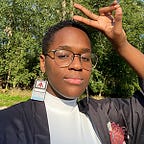MSU Visual Language (Texture): Research and Final Product
Objective: To draw conclusions about the visual language of textures unique to Montclair State University.
As a group, the four of us assigned were assigned with the task of approaching the idea of Montclair State University’s unique set of textures.
PART ONE: COLLECTION
The collection process was defined as gathering all information, no matter the form (photos, videos, audio, etc.). For our first steps, we decided to compile all of our knowledge, images, and information regarding different textures that were shown on campus. All of our research consisted of texture rubbings and photographs of textured areas on campus.
See our collected images here.
PART TWO: ANALYSIS
The analysis portion of this assignment was defined as the detailed examination of the elements and the structure of the research that usually serves as a basis for discussion.
One of the first things we discussed was whether we should focus on interior textures or exterior textures. Considering that most of our textured images came from the outdoors, we decided on the later. That, and we also addressed the fact that we had to make sure we didn’t step too far into pattern territory, considering how close the two can be when it comes to design.
We also discovered that Montclair’s buildings, in general, are now currently being designed to become ‘an expression of the campus identity’.
Source: It’s Back to the Future for Montclair’s Iconic College Hall
After that, it was looking closely at the images we took. We came to an overall agreement regarding these different textures that the group had come across, stating:
The texture on a college campus is meant to define the attitude of each setting. Buildings are textured specifically to create a sense of uniformity, even if their colors, designs, and/or other facets differ.
Furthermore, we came to the conclusion that different buildings displayed different styles of texture, depending on what studies that building represented. For example, buildings and halls like University Hall, Morehead Hall, and the School of Nursing have a similar textural aesthetic; smooth exterior walls and roofing. There is a stark difference between that general aesthetic and that of Calcia Hall or the Science Hall. These buildings that house more abstract studies have a different feel from that of the former.
PART THREE: FINDINGS
Our findings were meant to be the conclusion of our analysis. In general, we stated that Montclair’s unique textures are like the dynamic of the university.
A more detailed take:
Montclair State’s conglomerate of new and old buildings reflect the principles of education at the time of their construction. Due to the ongoing renovations and day to day maintenance on campus, the school’s texture is everchanging to keep up with the latest campus aesthetics.
Our final product can be found here.
